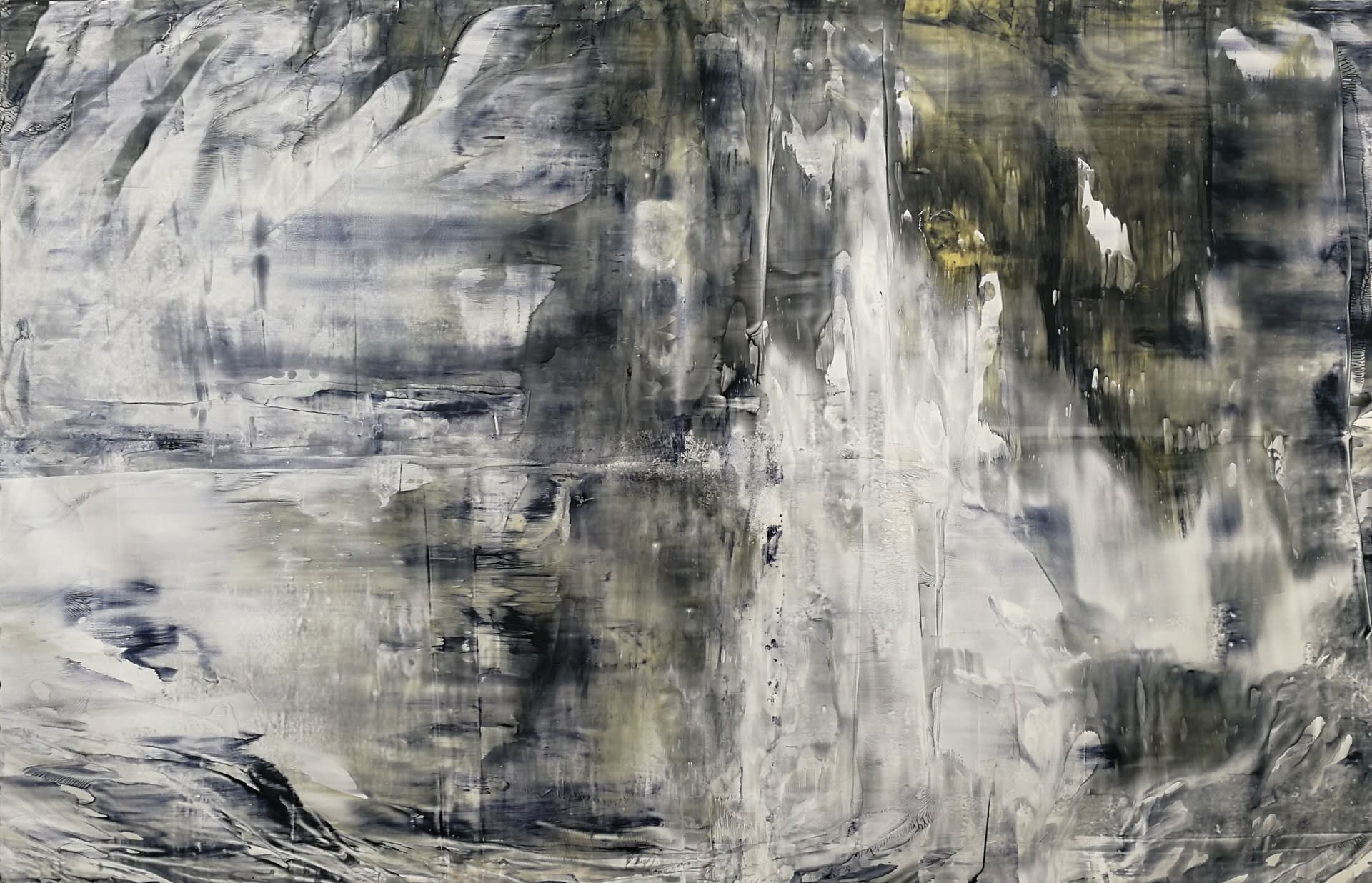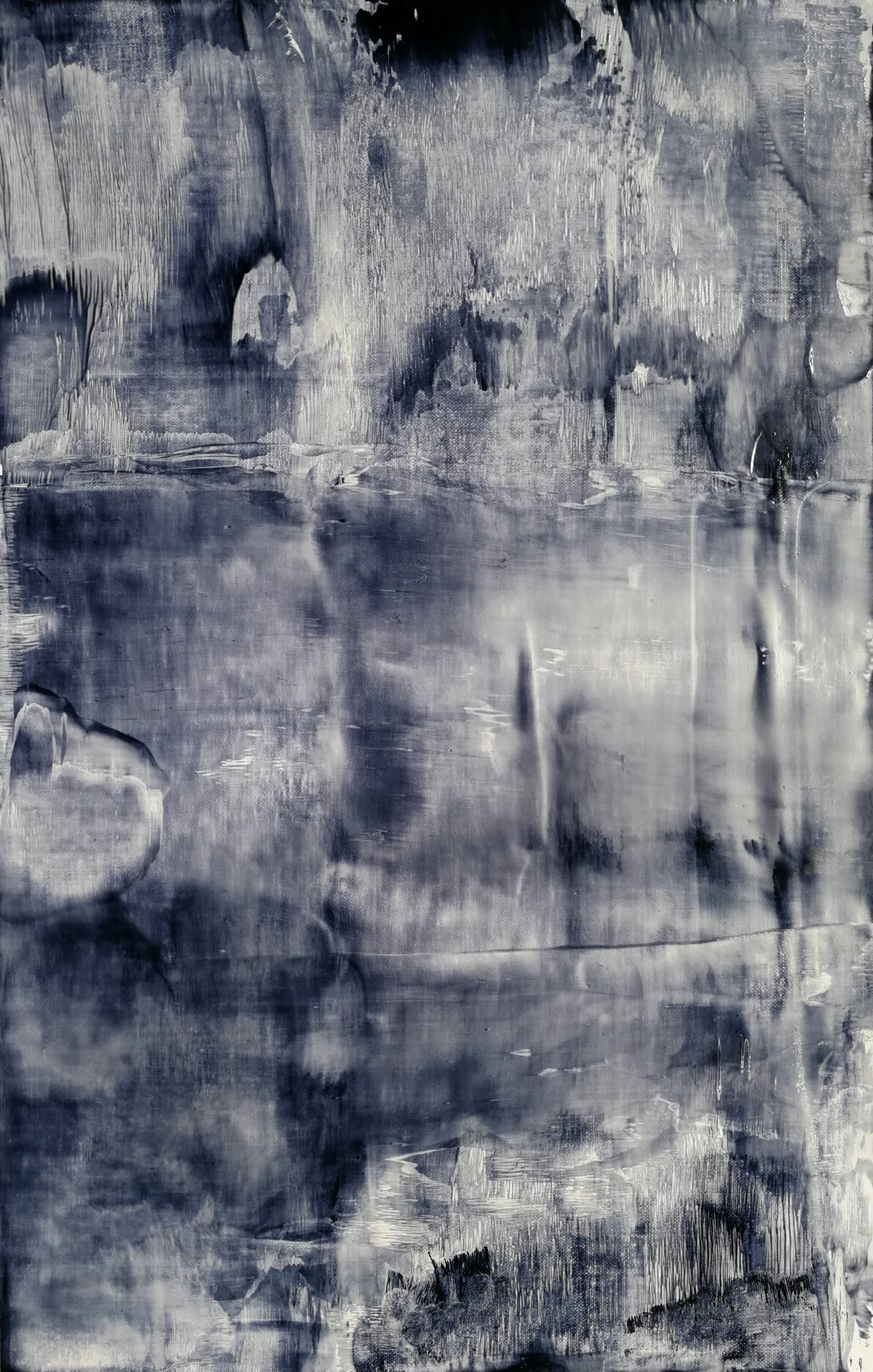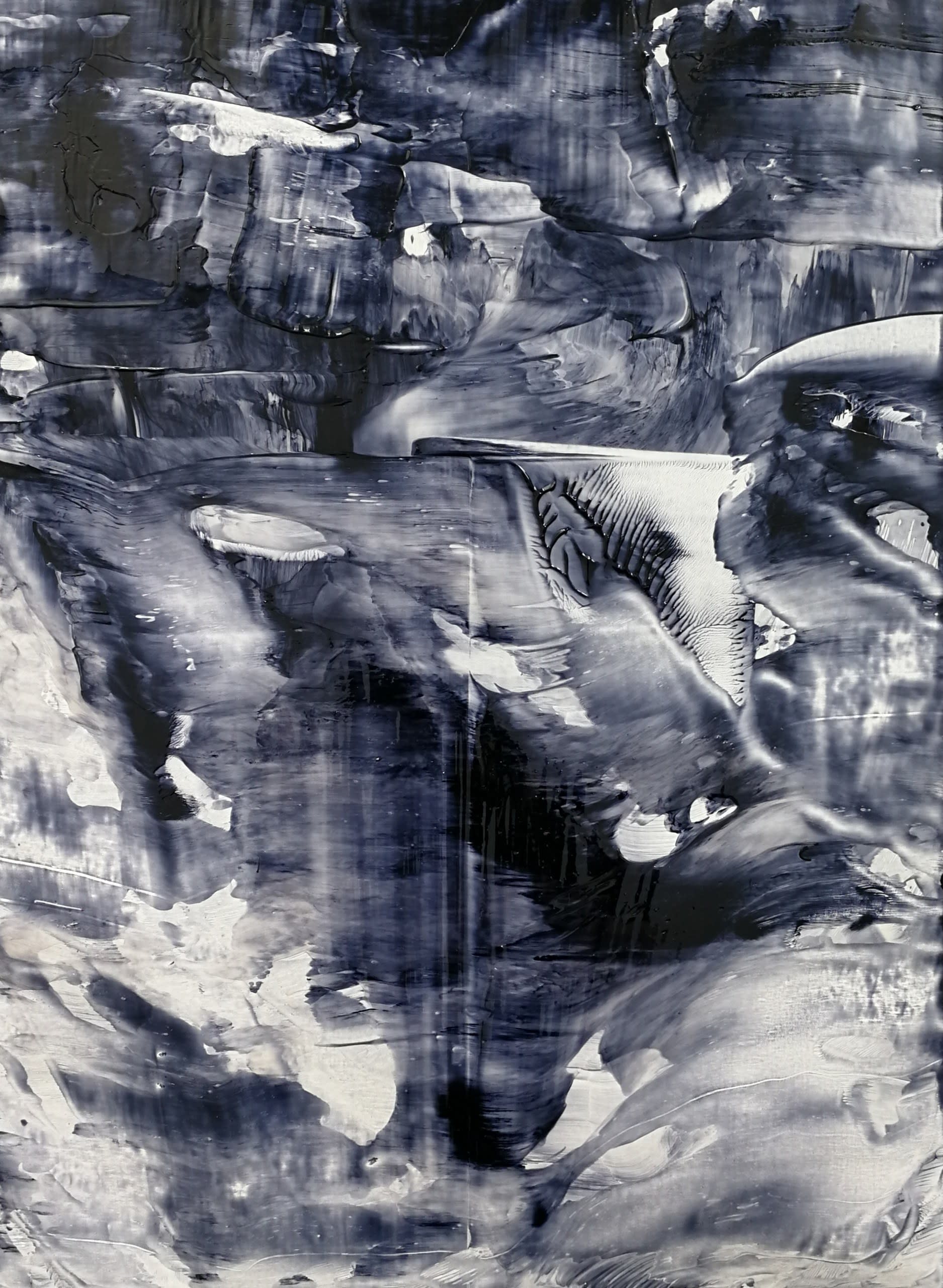Xiaozhijian Li (b. 1997) graduated with BA in Painting from Hubei Institute of Fine Arts in 2019. He is a recent shortlistee from the Chadwell Award. Recent Exhibitions Include: ‘Final, Not Over- Again’, Unit 1 Gallery/Workshop, London; ��‘Roving Boundary’, Cub_ism_ Artspace, Shanghai.
Xiaozhijian Li


I started to approach my recent practice from a series of drawings I did during the first lockdown. Many of the drawing's artistic languages, intellectual ideas share common ground with the present series. By remaking ancient Chinese landscape paintings I inhabit these images in my guts. At the same time I also try to outdo them with charcoal sticks on sketchbooks. The charcoal sticks cover almost the entire width of the paper and work alot like printing blades. They inhabit some gestures that I incorporate later into my paintings. From the depth of these black colors the ancient reminiscence of mountains, streams, and their silent space emerge. The spontaneity of the abstract marks create what belongs to now. And I want to believe they are my own marks that are different from my ancestors'. From this experience, I trace back to Chinese landscape paintings’ earlier history, to the time and realm before the birth of landscape paintings, to the age when only nature exists. Thus, these small drawings resonate with a more primitive grandeur spirit that I’m able to share with my precursors.
The difficulties and challenges in the process is how not to replicate the objects or images I see; or reproducing what is already in the mind. To let the marks attain their own lives but still keeping the essential bond with human spirit and feelings. In the end, it is to connect in that awaiting instance with what Eugen Herrigel quoted from his teacher in the book Zen in the Art of Archery: ‘Like accumulated winter snow slipping down from bamboo leaves’- that slipping moment of understanding at some degree the emptiness of both the perceiver and things perceived, and acquire a moment of naturalness and tranquility, like streams flowing out of mountains. This means that the boundaries of mark making for me is not entirely a pictorial or methodological question, but limitations we have to overcome consciously.
For me, Shan-shui or Chinese landscape paintings represent tranquility and non-attachment spiritually. And it’s from this state of mind that I start to paint, and hope that the finished pieces can arrive close to this mind state. Shan-shui is important to me both visually, artistically and spiritually.
If you take on a color on your blade and drag it across the surface, it is about seeing time: what is there in a second. Abstraction, which for me means finding things in that instant of making accidental marks represents that infinity in an instance. But that instance can embody a huge amount of information- the past images, images of the past. And instance is inherently open to the future because it is every minute new and different, as we are situated in ever-changing and recombining causes-and-conditions. Like the word 'change' is sometimes synonymous to the word 'future', from changes and differences we take on possibilities to project new futures. Thus in every fleeting moment of now we remake multiple possibilities of recombining past and future in the present instance.
These instances of mark-making record sensitively transitory thoughts and emotions passing through during the time of making, like musical notes. Some notes make the pieces flow; some record changes in emotion. The notes that record changes in emotion represent shouts of freedom from distant sky. And from these shouts of freedom I think a work acquires its visual effect.
Painting is similar to breathing in some ways. In the art of qin players play music not according to beats but to the breaths in one sentence. Similarly, to paint sometimes is to slightly segment breath into several sections and try to continue them. It is a continual, rhythmic, and complete process: From rising, to movement, to finishing.
I prefer to think about my practice as making or creating phenomena through different methods and experiments in painting, rather than imitating nature. To bring out some part of nature within ourselves when we manage to clear obstacles from our consciousness and enter the realm of harmony, and just let that locus flow out and be itself into visual forms and phenomena. Thus with this phenomena-making pursuit, in the sonic realm I prefer to link my paintings to making sounds rather than speaking sentences.



Medium:
charcoal on paperSize:
approx. 15x20cm each
Medium:
oil on canvas on boardSize:
50x70cm


Medium:
oil on canvasSize:
98x98cm
Medium:
oil on canvasSize:
125.5x204cm
Medium:
oil on canvasSize:
157.5x243.5cm
Medium:
oil on canvasSize:
21.5x34cm
Medium:
oil on canvasSize:
58x79cm
Medium:
oil on canvasSize:
99x120cm











June 2021, at RCA